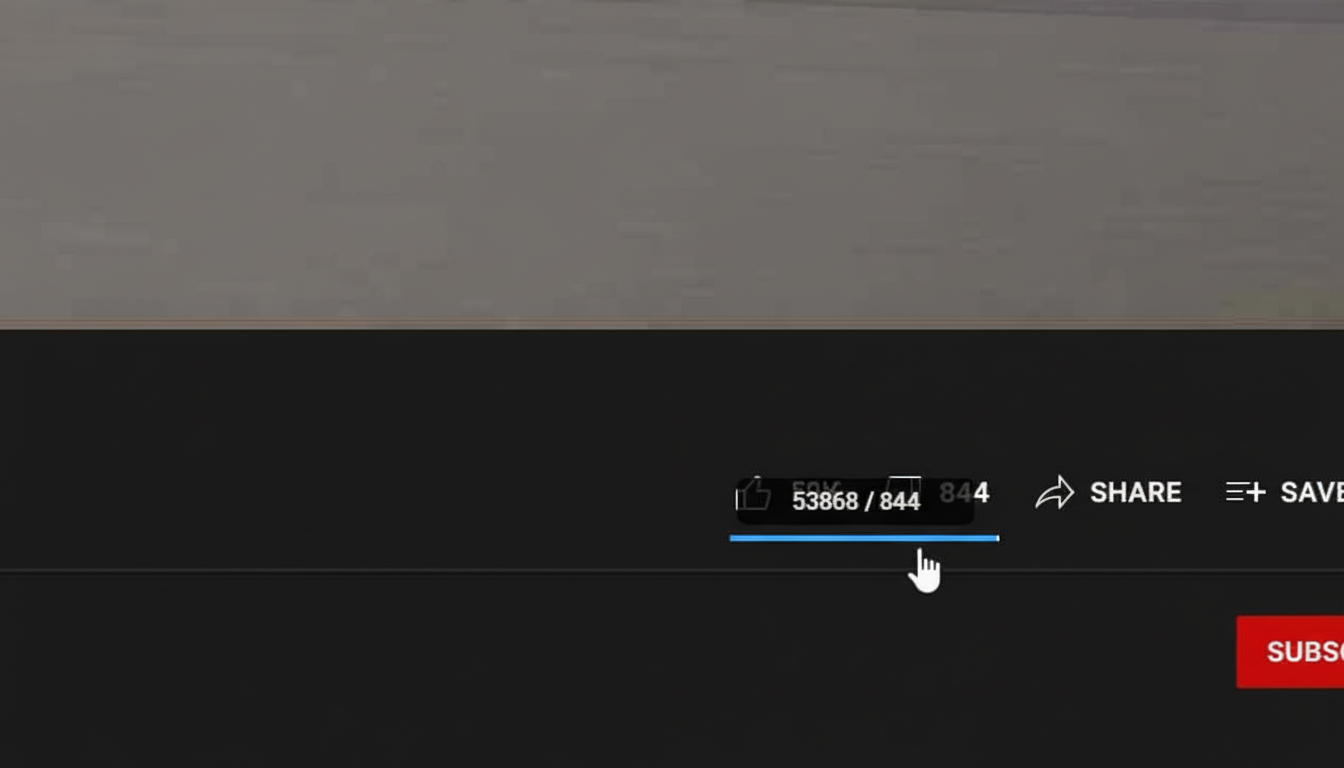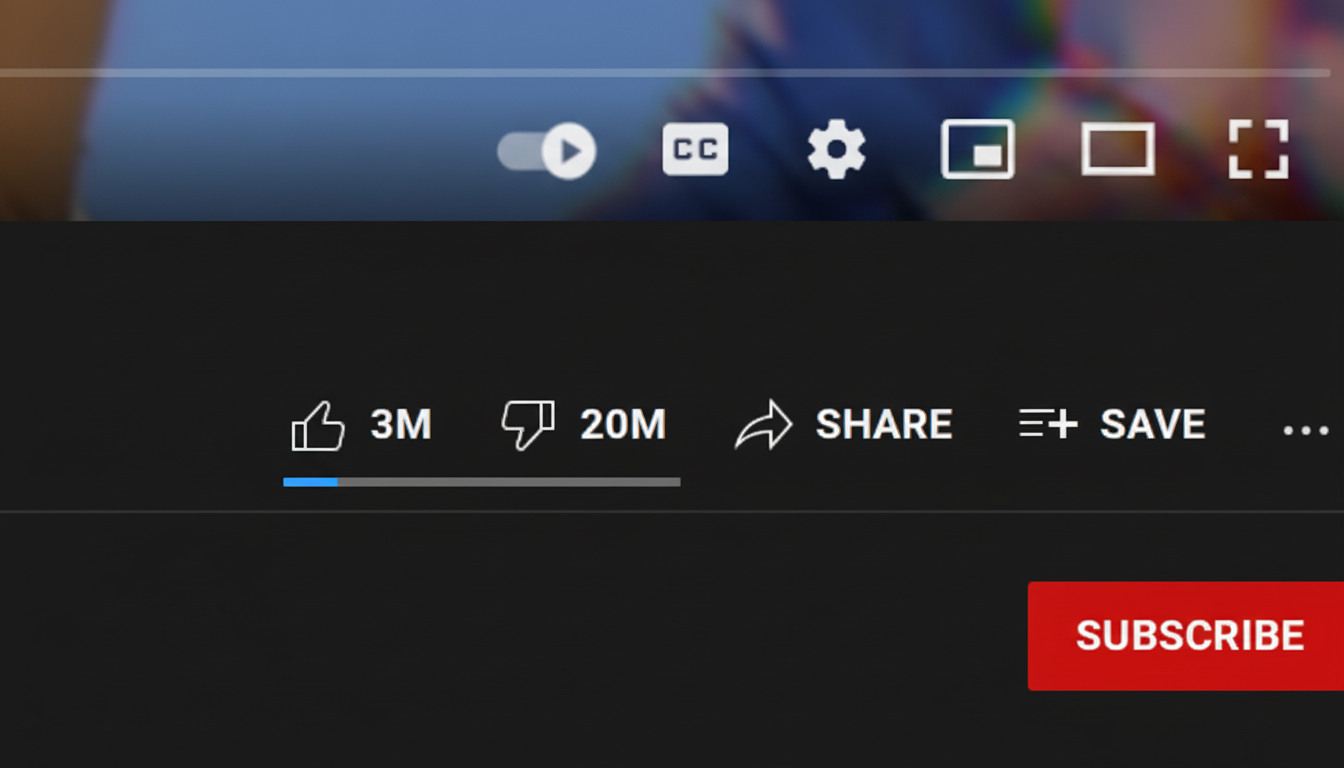A popular browser extension used to bring back public dislike counts on YouTube is attracting controversy after some users reported experiencing intrusive pop-ups advertising a new premium tier. The developer of Return YouTube Dislike says the action was a poorly executed fundraising effort that was required to keep the service up and running, a misfire that alienated users right out of the gate.
Return YouTube Dislike’s growth coincided with a decision by YouTube to stop showcasing public dislike totals in 2021 to protect creators from targeted harassment. Available on Chrome, Firefox and other Chromium-based browsers, the extension has exploded into one of the ecosystem’s largest community tools, with its developer citing tens of millions of daily users. And that scale now seems to be straining its shoestring budget.

Pop-ups Spark User Outrage Over Premium Prompts
The extension had, for months, created a small side panel on YouTube promoting a “Premium” upgrade through Patreon and even generated a separate tab with the premium release, users say. Others said that the messages were impossible to squelch and even showed up while they were in the middle of watching a video on YouTube, which is part of why there was speculation about adware-like behavior.
Because it needs permission to read and write your YouTube data, the extension has access to injecting interface components and opening tabs. That ability is commonplace for extensions that alter the appearance or functionality of sites. The team has long said it does not gather personal browsing history and employs safeguards to avoid tracking, but the pop-up rollout shook trust anyway. Store reviews rapidly turned sour, with users labeling the messages as “ads” to which they never agreed.
The Push Was Driven by Costs, Developer Says
Project lead Dmitry Selivanov told his community that traffic and the burden of operating costs had outstripped donations. He mentioned approximately 20 million unique daily users and a backend that stored more than 15 TB of data, which until recently had been funded by about $400 in monthly Patreon contributions. He estimated core infrastructure spending to be about $600 a month, though even that number is after aggressive cost-cutting and with little redundancy for backups.
Donations soared to more than $800 a month in the backlash, according to the project’s Patreon page. Selivanov also admitted to a botched launch: the tab-opening behavior was supposed to be a low-friction changelog displayed during restart, not an in-your-face roadblock while browsing. He said the intent was to foster voluntary support, not alienate free users.
How the Dislikes Reappear on YouTube via Estimates
YouTubers called us to pick up the phone and make sure our creators could participate on a level playing field. “We will continue to experiment, make changes and listen,” YouTube said, adding that it had seen fewer duplicate dislike attacks against smaller channels after conducting its own experiments with removal of public dislike counts. In response, Return YouTube Dislike uses a mix of archived snapshots taken before the change, user signals (2021+), and public metrics to provide estimates on totals.

Any such approach involves massive, ongoing infrastructure: storing historical data, ingesting new feedback and serving billions of requests. It also comes with caveats — numbers can be out of date and will never be as authoritative as native counters built by the platforms themselves. Still, a visible ratio is a quick quality signal for many viewers, particularly on tutorials, product demos or news clips where credibility is quickly judged.
Policy And Trust Concerns For Extensions
The episode underscores a persistent tension in an extension economy based on free tools that are considered critical at scale but have no reliable funding model. Chromium-based browsers like Vivaldi are subject to the Chrome Web Store and Mozilla’s Add-ons policy, which mandates a clear statement on advertising behavior and access to user data; ad injection or UI disruption can lead to enforcement. Past high-profile cases such as Stylish’s collection of users’ data and The Great Suspender’s takedown serve to highlight how fast it is possible for user trust in the community to vanish.
Privacy-minded groups like the Electronic Frontier Foundation often recommend reviewing permissions, reading update notes and looking for sudden behavioral changes. Even good-faith projects can run aground if experiments in (monetization, for example) aren’t meticulously communicated and tested, and browsers offer little recourse until fixes are available other than to uninstall or disable.
What You Can Do Now if Pop-ups or Prompts Annoy You
If you depend on Return YouTube Dislike, look for the most recent version and examine its settings—developers sometimes include toggles that allow you to turn off promotion prompts after a backlash. If you appreciate the project and do not want any future funding gimmicks that could suck life out of it, please contribute.
As for those who might be uncomfortable with the change, here are some practical interim steps:
- Disable the extension temporarily.
- Use a vetted alternative.
- Rely on native YouTube signals like comments and creator reputations.
Like all extensions, smart hygiene — light permissions, careful updates and a fast uninstall when behavior changes — is always the best defense.

